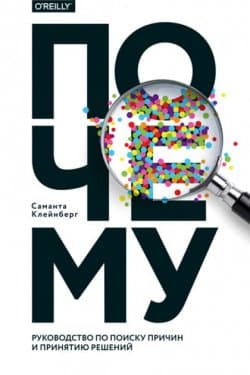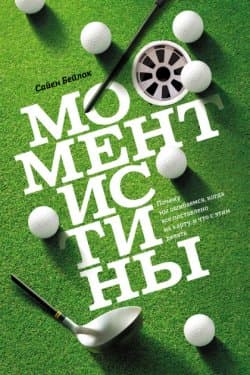Почему - Саманта Клейнберг (2017)
-
Год:2017
-
Название:Почему
-
Автор:
-
Жанр:
-
Язык:Русский
-
Страниц:160
-
Рейтинг:
-
Ваша оценка:
Автор показывает, что такое причинно-следственная связь, поясняет, почему в ее определении мы часто ошибаемся, как можно принимать верные решения. Благодаря этой книге вы научитесь анализировать информацию, выявлять причинно-следственные связи, объединять прошлое, предсказывать будущее.
Книга будет интересна философам, аналитикам, экономистам, медикам, юристам, начинающим ученым.
Почему - Саманта Клейнберг читать онлайн бесплатно полную версию книги
Shanks, D. R. (1995). The Psychology of Associative Learning. Cambridge University Press, Cambridge.
Shanks, D. R., Pearson, S. M., and Dickinson, A. (1989). Temporal Contiguity and the Judgement of Causality by Human Subjects. The Quarterly Journal of Experimental Psychology, 41 B(2): 139–159.
Sidhu, D. (2015). Moneyball Sentencing. Boston College Law Review, 56(2): 671–731.
Silverman, R. H., Das Gupta, J., Lombardi, V. C., Ruscetti, F. W., Pfost, M. A., Hagen, K. S., Peterson, D. L., Ruscetti, S. K., Bagni, R. K., Petrow-Sadowski, C., Gold, B., Dean, M., and Mikovits, J. (2011). Partial retraction. Science, 334(6053): 176.
Simpson, E. H. (1951). The Interpretation of Interaction in Contingency Tables. Journal of the Royal Statistical Society: Series B (Statistical Methodology), 13(2): 238–241.
Skyrms, B. (1984). EPR: Lessons for Metaphysics. Midwest Studies in Philosophy, 9(1): 245–255.
Slobogin, C. (2012). Risk Assessment. In J. Petersilia and K. R. Reitz (eds.), Oxford Handbook of Sentencing and Corrections, pp. 196–214. Oxford University Press, New York.
Sloman, S. A. and Lagnado, D. (2015). Causality in Thought. Annual Review of Psychology, 66: 223–247.
Smith, G. C. S. and Pell, J. P. (2003). Parachute use to prevent death and major trauma related to gravitational challenge: Systematic review of randomised controlled trials. BMJ, 327(7429): 1459–1461.
Snow, J. (1854). The Cholera Near Golden Square, and at Deptford. Medical Times and Gazette, 9: 321–322.
Snow, J. (1855). On the Mode of Communication of Cholera. John Churchill, London.
Sobel, D. M. and Kirkham, N. Z. (2006). Blickets and babies: The development of causal reasoning in toddlers and infants. Developmental Psychology, 42(6): 1103–1115.
Sobel, D. M. and Kushnir, T. (2006). The importance of decision making in causal learning from interventions. Memory & Cognition, 34(2): 411–419.
Sobel, D. M., Tenenbaum, J. B., and Gopnik, A. (2004). Children’s causal inferences from indirect evidence: Backwards blocking and Bayesian reasoning in preschoolers. Cognitive Science, 28(3): 303–333.
Sober, E. (1987). Parsimony, Likelihood, and the Principle of the Common Cause. Philosophy of Science, 54(3): 465–469.
Sober, E. (2001). Venetian Sea Levels, British Bread Prices, and the Principle of the Common Cause. British Journal for the Philosophy of Science, 52(2): 331–346.
Sober, E. and Papineau, D. (1986). Causal Factors, Causal Inference, Causal Explanation. Proceedings of the Aristotelian Society, Supplementary Volumes, 60: 97–136.
Sonnenberg, L., Gelsomin, E., Levy, D. E., Riis, J., Barraclough, S., and Thorndike, A. N. (2013). A traffic light food labeling intervention increases consumer awareness of health and healthy choices at the point-of-purchase. Preventive Medicine, 57(4): 253–257.
Spanos, N. P. and Gottlieb, J. (1976). Ergotism and the Salem Village Witch Trials. Science, 194(4272): 1390–1394.
Spellman, B. A. (1996). Acting as Intuitive Scientists: Contingency Judgments Are Made while Controlling for Alternative Potential Causes. Psychological Science, 7(6): 337–342.
Spellman, B. A. and Kincannon, A. (2001). The Relation between Counterfactual (“But for”) and Causal Reasoning: Experimental Findings and Implications for Jurors’ Decisions. Law and Contemporary Problems, 64(4): 241–264.
Spencer, S. J., Steele, C. M., and Quinn, D. M. (1999). Stereotype Threat and Women’s Math Performance. Journal of Experimental Social Psychology, 35(1): 4–28.
Spirtes, P. (2005). Graphical models, causal inference, and econometric models. Journal of Economic Methodology, 12(1): 3–34.
Spirtes, P., Glymour, C., and Scheines, R. (2000). Causation, Prediction, and Search, 2nd edition. The MIT Press, Cambridge, MA. First published 1993.
 Почему они не работают? Новый взгляд на мотивацию сотрудников Сьюзен Фаулер
Почему они не работают? Новый взгляд на мотивацию сотрудников Сьюзен Фаулер
 Королевство Аманда Стивенс
Королевство Аманда Стивенс
 Почему Саманта Клейнберг
Почему Саманта Клейнберг
 Момент истины. Почему мы ошибаемся, когда все поставлено на карту, и что с этим делать? Сайен Бейлок
Момент истины. Почему мы ошибаемся, когда все поставлено на карту, и что с этим делать? Сайен Бейлок
 Почему. Руководство по поиску причин и принятию решений Саманта Клейнберг
Почему. Руководство по поиску причин и принятию решений Саманта Клейнберг
 Здравый смысл врет. Почему не надо слушать свой внутренний голос Уоттс Дункан
Здравый смысл врет. Почему не надо слушать свой внутренний голос Уоттс Дункан

 Пир теней
Пир теней  Князь во все времена
Князь во все времена  Когда порвется нить
Когда порвется нить  Пока я здесь
Пока я здесь 



